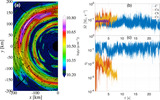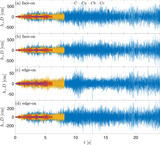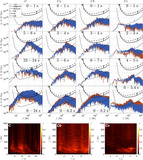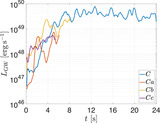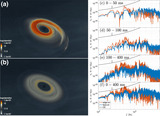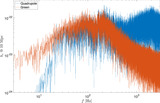Image Details
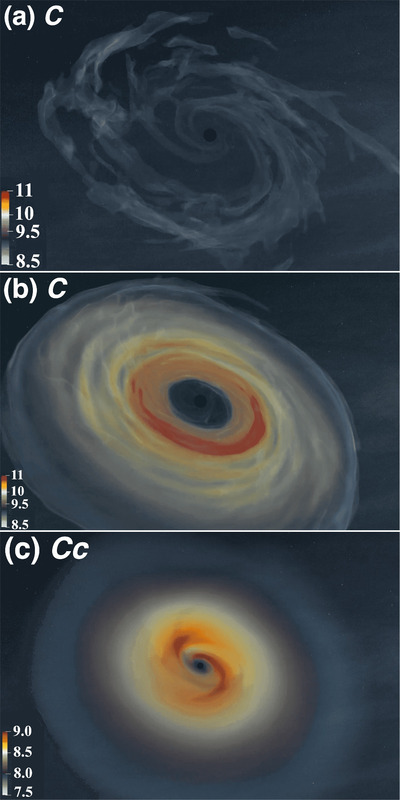
Caption: Figure 1.
3D renderings illustrate the logarithmic mass density (in cgs) of collapsar accretion disks. The length scale can be measured with respect to the BH event horizon radius, represented by a black circle. (a) The early formation stages of the disk (≈1 s) feature low-density spiral density waves. (b) At t ≳ 1 s, with the accumulation of infalling gas, a high-density ring forms at R ≈ 15r g . RWIs in the disk give rise to nonaxisymmetric modes (shown at t ≈ 5 s). Over time, the disk viscously spreads and its density progressively drops. (c) In the absence of strong cooling, the disk exhibits an extended structure (note that the horizon size in panels (a) and (b) is considerably larger than that in panel (c)) and attains lower densities compared to strongly cooled disks. Consequently, weakly cooled disks exhibit spiral arms at all times (shown at t ≈ 2 s), giving rise to a weaker GW signal. Full movies showcasing the evolution of all collapsar accretion disks are available at http://www.oregottlieb.com/disk_gw.html and on Zenodo (doi:10.5281/zenodo.13139529).
Copyright and Terms & Conditions
© 2024. The Author(s). Published by the American Astronomical Society.


